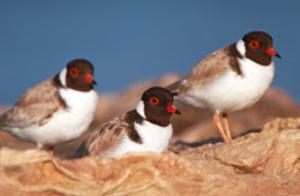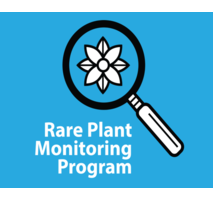Search for SIDA+SP.+(MURRAY+SPRINGS+R.W.JOHNSON +MRS919) returned 5,698 results.
Refine results
Refine results
Section
- Locality (4,733)
- Species (341)
- Region (249)
- Common Name (222)
- Biodiversity Science project (72)
- Site Page (30)
- Data provider (27)
- Data resource (13)
- Institution (7)
- Support article (3)
- Collection (1)
Image available
- Yes (220)
Taxonomic status
- Accepted (182)
- Synonym (63)
- Heteroptypic Synonym (49)
- unreviewed (25)
- Homotypic Synonym (12)
- Miscellaneous Literature (3)
- Pro-parte Synonym (3)
- unreviewedSynonym (2)
- Excluded (1)
Conservation status in Australia
- Endangered (7)
- Critically Endangered (2)
- Vulnerable (2)
- Extinct (1)
Conservation status in ACT
- Endangered (2)
- Vulnerable (1)
Conservation status in NSW
- Endangered (2)
Conservation status in QLD
- Endangered (1)
Conservation status in VIC
- Endangered (6)
- Critically Endangered (2)
- Vulnerable (2)
- Extinct (1)
- Threatened (1)
Conservation status in TAS
- Endangered (1)
Conservation status in SA
- Rare (3)
Conservation status in WA
Conservation status in NT
- Endangered (1)
- Vulnerable (1)
-
Biodiversity Science project: Dragonfly Monitoring Network
The Dragonfly Monitoring Network is a citizen-scientist program that monitors the health of dragonfly populations throughout the Chicago area. This program represents an important step in collecting data on insect populations and their response to land management techniques. Volunteers will be trained to collect and submit data each summer from an assigned site...

-
Biodiversity Science project: Tree Trackers!
Tree Tracker participants will take part in an exciting training session and then visit specific trees in their neighborhoods to observe and record the life cycle changes in trees. This information can then be used to learn more about changes in climate. Participants upload their observations to the Project Budburst website, which professional scientists then use. Citizen scientists can see recently uploaded observations as well as year-end reports from the professional scientists...

-
Biodiversity Science project: EnvironMentors
EnvironMentors provides mentors to high school students from under-represented backgrounds for college degree programs in environmental and related science fields. The program matches minority high school students with college and university faculty, graduate and undergraduate students, and science and environmental professionals, in one-to-one mentoring relationships...

-
Biodiversity Science project: The Living Snow Project
Scientists at Western Washington University need your help collecting pink snow samples while you are out skiing, climbing, or hiking this spring and summer for The Living Snow Project. The project is studying snow algae communities using DNA samples from across the Cascades. Snow algae are pink or red cells that live in/on the snow and are often called ‘watermelon snow’...

-
Biodiversity Science project: Beach-nesting Birds
"Because beach-nesting birds have such poor breeding success, their numbers are declining and it won't be long before they become extinct. They are in desperate need of a helping hand". Many different types of birds live in Australia’s coastal areas - gulls, terns, cormorants and shorebirds, to name a handful - but only a few of them actually nest on the beach...

-
Biodiversity Science project: Wisconsin Rare Plant Monitoring Program
The Wisconsin Rare Plant Monitoring Program gives plant enthusiasts an opportunity to conduct surveys for rare plants around the state. The information these volunteers collect is used to assess plant population trends during state and national conservation efforts. Program participants are trained in surveying techniques, including how to accurately estimate large plant populations, assess habitat condition, and use GPS coordinates to locate and mark rare plant populations...

-
Site Page: Using ALA in the classroom – Classification – Atlas of Living Australia
Posted on 6th March 2018 Former teacher and CSIRO’s Indigenous STEM Program Coordinator Geoff Guymer has a wealth of experience teaching in classrooms across Australia and loves using the ALA. This article outlines how he used the ALA in a Year 8 classroom, in Victoria, to help teach classification. Using his experience working in remote communities in the Northern Territory, Geoff gave the classification activity a local Indigenous focus...
-
Site Page: Environmental monitoring workshops for Queensland’s Nature Refuges – Atlas of Living Australia
Posted on 27th June 2018 The Condamine Alliance is working with Nature Refuge landowners to teach best practice environmental monitoring using the ALA’s BioCollect tool. The Condamine Alliance is a not-for-profit charity working with communities in the Condamine catchment in Queensland (one of the largest catchments in the Murray-Darling Basin including the towns of Chinchilla, Warwick, Toowoomba and Dalby)...
-
Site Page: Citizen Science focus groups and user testing – Atlas of Living Australia
Posted on 21st June 2010 The Atlas' Citizen science focus groups and usablity testing are complete. A detailed report on these activities, titled ‘ALA Citizen Science Focus Group Report’ has been released online. Benay Wettle and Robyn Lawrence, Atlas of Living Australia. In the last newsletter, Piers Higgs from Gaia Resources reported how the Atlas of Living Australia (ALA) is working with citizen scientists and citizen science (CS) groups...
-
Site Page: July 2008 newsletter summary – Atlas of Living Australia
Posted on 29th July 2008 July 2008 – Atlas activities, articles and reports, media releases, conferences and workshops, biodiversity weblinks Many thanks to all those who responded positively to the first Atlas newsletter and particularly to those who have already provided input to the Atlas’ user needs analysis. All information in these newsletters is included in the Atlas of Living Australia website at Atlas Updates. To subscribe to this newsletter, you need to create a My Profile...